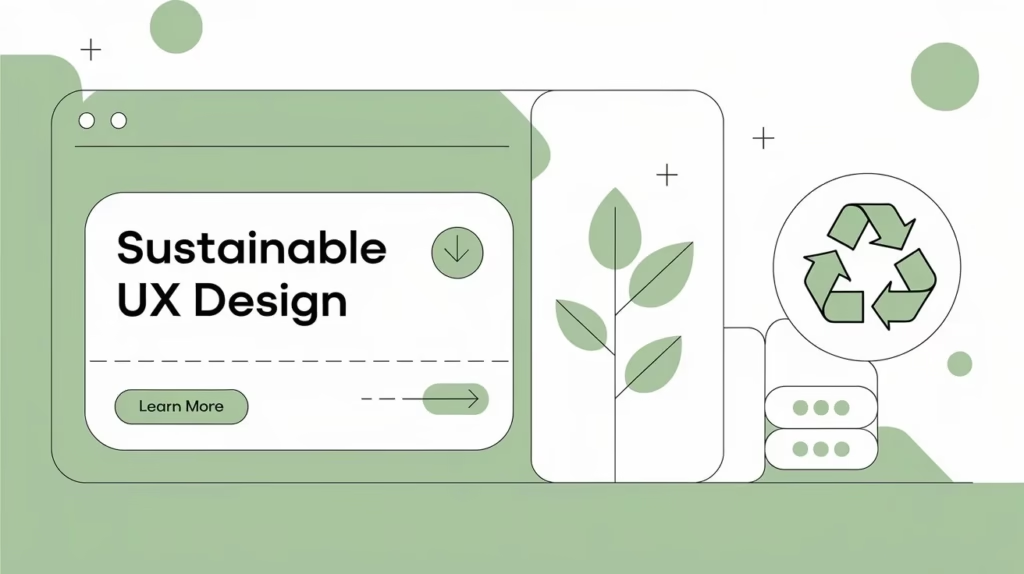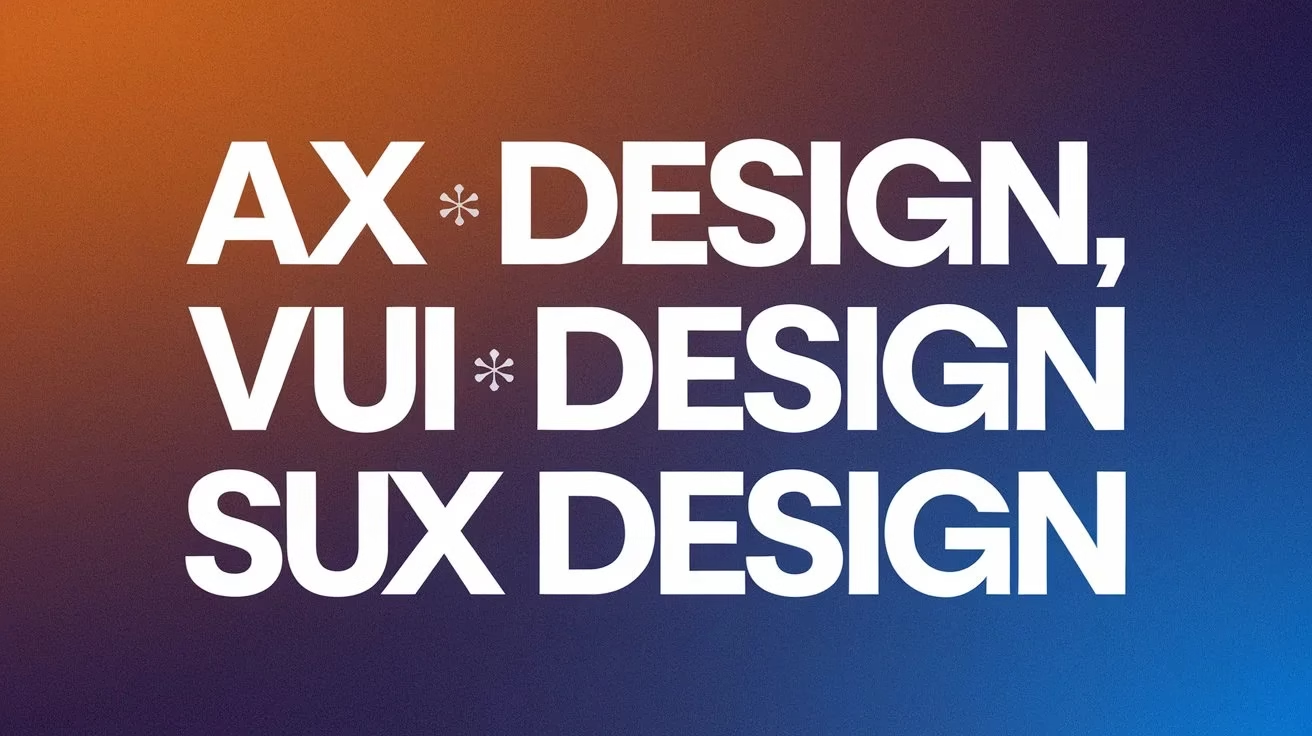Ax Design, VUI Design, and Sustainable UX Design: A Future of Digital Experiences Deep Dive

What is AX Design (Artificial Intelligence Agent Experience Design)?
Artificial Intelligence Agent Experience Design, or AX Design for short, emphasises designing seamless, human-centred interactions between users and AI-powered agents including recommendation systems, virtual assistants, and chatbots.
How might AX Design Shape AI interactions?
Designed with an eye towards improving user interactions with AI-driven agents including virtual assistants, recommendation systems, and chatbots, AXE (Artificial Intelligence Agent Experience) Design is The intention is to produce flawless, human-like interactions that feel personalised and intuitive.
Why is AX Design relevant?
Users expect effective and interesting interactions with AI-powered solutions including customer care bots, Google Bard, and ChatGPT. Through better usability, openness, and trust, AX Design closes the distance between human expectations and artificial intelligence capacity.
How might AX design enhance the user experience?
AI learns user preferences and provides pertinent recommendations—that is, suggestions from Netflix driven by artificial intelligence.
- Users should know how artificial intelligence decides to establish confidence.
- Artificial intelligence chatbots and voice assistants have to feel natural in dialogue.
- AI should elegantly manage misinterpretation and offer precise adjustments.
- Combining text, audio, and visual interactions—that is, multimodal artificial intelligence—allows a consistent user experience.
- Exemplify some actual instances of AX design here.
- Recommendations for Netflix and Spotify are AI-based content curation catered to personal preferences.
- AI-driven chat assistants like Zendesk and Drift enhance customer service by offering quick and accurate answers in customer support chatbots.
- Tools like IBM Watson enable clinicians to analyse patient data and therapy recommendations, thereby acting as healthcare artificial intelligence assistants.
- Amazon’s AI-driven suggestions enable consumers to locate items they are more likely to buy in e-commerce.
- For consumers looking for a company, virtual artificial intelligence companions such as Replika craft interesting dialogues.
- Using human-centred design ideas will help to improve artificial intelligence-human interaction.
- Verify that AI justifications are easily consumed and clear.
- Create feedback loops whereby users may correct artificial intelligence and enhance its replies.
- Refine AI-driven content recommendations for applicability.
- Training models on many datasets helps to reduce artificial intelligence bias.
- Think about ethical artificial intelligence methods to stop biased decisions and false information.
What is VUI Design (Voice User Interface Design)?
VUI (Voice User Interface) Design focuses on creating intuitive and natural voice-based interactions between users and digital devices. It enables people to interact with technology through spoken commands, reducing the need for screens and physical inputs.

How VUI Changes Digital Interactions?
Design for VUI (speech User Interface) emphasises developing simple speech interactions with devices such as Alexa, Siri, Google Assistant, and smart home appliances. Using hands-free communication will help to make digital experiences more easily available.
Why is VUI Design Crucially Important for the Future?
Designing effective voice-based experiences is essential as smart assistants enter regular life. For ease, people want voice search, voice commands, and speech-activated automation.
How may VUI be optimised for increased user engagement?
Natural language processing (NLP) calls for AI to grasp several languages, tones, and accents.
- Responses have to be brief, pertinent, and interesting in conversational design.
- Users should have vocal confirmations to prevent uncertainty and error handling.
- Voice interfaces should be accessible to those with disabilities inclusively.
- AI should identify past encounters to provide a better experience.
- For what practical uses does VUI design find application?
- Smart homes let you use voice commands to control security systems, thermostats, and lights.
- Using Alexa or Google Assistant, voice commerce—that is, grocery or product ordering—is possible.
- Voice assistants guiding visually challenged people across technology provide healthcare assistance.
- Car entertainment systems control GPS, phones, and music using voice commands, thus free navigation is achieved.
- Customer Support: AI-powered speech bots quickly answer regular questions.
- Typical Difficulties in VUI Development
- Managing difficult instructions without annoying the user.
- Issues of privacy in voice data collecting.
- Reducing misunderstandings and strengthening context knowledge would help.
- Background noise interference influences the accuracy of voice recognition.
- Guaranturing worldwide users’ multilingual support.
- Best VUI Design Practices
- Maintain brief and effective dialogue.
- Design for many turn interactions to preserve the natural flow.
- Add audio feedback (beeps, confirmations).
- Optimise for voice search enquiries with regard to SEO.
- Advance voice recognition over time using machine learning models.
- Apply adaptive learning so VUI might change depending on user behaviour.
What is Sustainable UX Design (S-UX Design) ?
Sustainable UX (S-UX) Design is centred on producing ethical, long-lasting, ecologically benign digital experiences. It seeks to lower the environmental impact of digital goods by guaranteeing they use less energy, encourage accessibility, and cut waste.

In what ways may UX design be sustainable?
Sustainable UX Design (S-UX Design) aims to minimise the environmental impact of digital products while nevertheless preserving usability and accessibility. It guarantees moral, environmental, and socially conscious design choices.
Why in the digital environment of today does sustainable UX matter?
Rising digital pollution, energy-intensive websites, and inefficient app designs—S-UX Design helps companies produce low-impact, highly efficient products.
What are the fundamental ideas guiding sustainable UX?
- Optimise apps and websites to use less power in order for energy-efficient design.
- Reducing pointless tracking, scripts, and bloated designs will help to minimise data usage.
- Verify fair AI methods, accessibility, and objective algorithms in ethical and inclusive user experience.
- Design goods with a longer lifetime and fewer redesigns in mind of longevity and minimalism.
- Use sustainable web hosting run on renewable energy.
- Reducing data storage and processing emissions will help to raise awareness of digital carbon footprints.
- How may Sustainable UX Design be applied in online and app design?
- Lightweight images will help to maximise website performance.
- Turn on low-power themes and dark mode to cut consumption of energy.
- Limit too much data tracking to enhance efficiency and privacy.
- Create enduring UI/UX components rather than regular redesigns.
- Lazy loading will help to lower page load times and energy use.
- Choose sustainable coding techniques to reduce processing capability.
- Case Study: How Google and Apple Apply Sustainable UX
- Apple maximises programs to increase device lifetime, hence lowering electronic waste.
- Google applies environmentally friendly UI design principles and runs data centres on renewable energy.
- Ecosia is a search engine that supports sustainability by planting trees funded by advertisement income.
How might AX, S-UX, and VUI Design cooperate?
Digital interactions will be shaped going forward by AX (Artificial Intelligence Agent Experience Design), VUI (Voice User Interface Design), and S-UX (Sustainable UX Design). Combining these ideas can help companies build smart, quick, environmentally friendly user interfaces that give usability, accessibility, and sustainability first priority.

Building Greener, Smarter AI Experiences
By increasing speech recognition, personalisation, and conversational flow—that is, by making interactions more human-like— AX improves VUI. S-UX guarantees, meantime, that these technologies run low on energy consumption and support a sustainable digital ecology. Voice interfaces can be built to consume little data, therefore lowering reliance on screens and increasing accessibility; AI-driven apps can be optimised to require fewer computer resources.
Including environmentally friendly methods in voice interfaces and artificial intelligence. While voice assistants can be made to minimise needless interactions, optimising AI algorithms helps lower processing power and memory needs. Further improving efficiency is the use of renewable-powered servers for artificial intelligence applications; low-power settings in VUI devices help to lower energy use. By serving many user needs with little resource use, AI-powered speech interfaces can also improve accessibility.
Technology Directors Using AX, VUI, and S-UX
Already applying these ideas are tech behemoths including Google, Amazon, and Apple. Google Assistant gives energy-efficient AI processing top priority; Amazon Alexa constantly enhances VUI interactions with low-power settings; Apple Siri employs on-device AI to reduce server loads and maximise privacy.
The Future of Sustainability, Voice Interactions, and AI
More human-like AI experiences, intelligent voice interactions, and sustainable AI-driven solutions optimising energy consumption are resulting from the junction of several technologies. Companies that adopt AX, VUI, and S-UX all combined can improve user involvement, save running costs, and create a sustainable brand fit for environmentally responsible activities.
Can voice interfaces and artificial intelligence be sustainable?
Surely! Applying Sustainable UX ideas to AX and VUI Design will help us to produce moral, environmentally friendly, and quite effective digital experiences.
How may VUI and artificial intelligence be made more sustainable?
- Optimise artificial intelligence models to consume less computational capability.
- Minimize pointless voice exchanges to cut data processing times.
- For voice-activated applications and artificial intelligence, run servers run on renewable energy.
- Make voice-activated gadgets that give efficiency priority over forms of constant listening.
- Encourage moral artificial intelligence training programs that lower prejudice and waste.
Where do AX, VUI, and S-UX Design stand going?
- More human-like artificial intelligence is found in voice assistants and chatbots.
- Eco-aware artificial intelligence design meant to lower digital pollution levels.
- improved context-aware, energy-efficient voice-driven interfaces.
- Adaptive artificial intelligence user experience learning and personalising without undue data consumption.
- More acceptance of sustainable hosting for programs run on artificial intelligence.
Finally, why these UX trends are important for the future?
Digital experiences are changing with AX Design, VUI Design, and Sustainable UX. Companies have to embrace these ideas if they want to remain ahead and produce wiser, more moral, and user-friendly goods.
Combining these ideas can help businesses create environmentally friendly, voice-activated, AI-powered digital products in line with the next trends.
🚀 Are you prepared to maximise your digital experiences using AX, VUI, and Sustainable UX Design?

